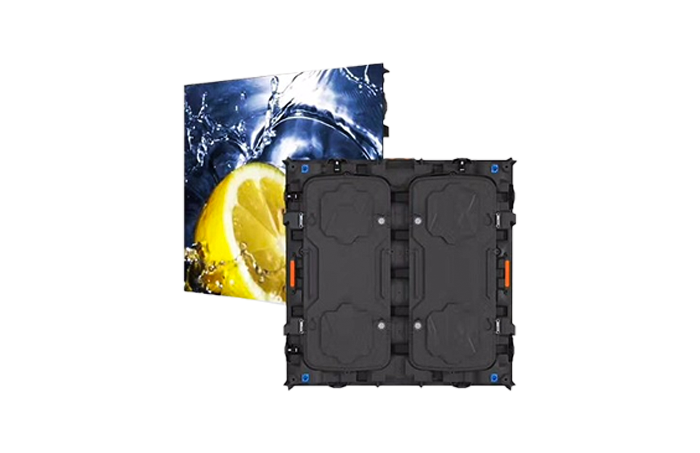source:Industry Trends release time:2022-10-13 Hits: Popular:led screen wholesaler

There are two ways to control LED brightness. One is to change the current flowing through the LED, the general LED tube allows continuous operating current in about 20 mA, in addition to the red LED saturation phenomenon, other LED brightness is basically proportional to the current flowing through; Another method is to make use of the visual inertia of the human eye and use the pulse width modulation method to achieve gray level control, that is, periodically change the light pulse width (i.e. duty cycle). As long as the repetitive lighting period is short enough (i.e., the refresh frequency is high enough), the human eye will not feel the luminescent pixel in the jitter. Because pulse width modulation is more suitable for digital control, so in the widespread use of microcomputer to provide LED display content today, almost all LED screens are using pulse width modulation to control the gray level.
The LED control system is usually composed of main control box, scanning board and display control device. The main control box obtains the color brightness data of a screen pixel from the display card of the computer, and then redistributes it to several scanning boards. Each scanning board is responsible for controlling several rows (columns) on the LED screen, and the LED display control signals on each row (column) are transmitted in a serial manner. Currently, there are two ways of serial transmission of display control signals: The first is to control the gray level of each pixel point in a centralized way on the scanning board. The scanning board decompositions the brightness value of each row pixel from the control box (i.e., pulse width modulation), and then transmits the switched on signal of each row LED to the corresponding LED in the form of pulse (1 if it is on, 0 if it is not on) in a serial way according to the row to control whether it is on or not. This method uses less devices, but the amount of serial data transmission is large, because in a repeated lighting cycle, each pixel needs 16 pulses at 16 levels of gray level, and 256 pulses at 256 levels of gray level. Due to the limitation of device operating frequency, the LED screen can generally only achieve 16 levels of gray level.
Another method is to scan the board serial transmission content is not each LED switch signal but an 8-bit binary brightness value. Each LED has its own pulse width modulator to control the lighting time. In this way, each pixel needs only 4 pulses at 16 levels of gray level and 8 pulses at 256 levels of gray level in a repeated lighting cycle, which greatly reduces the serial transmission frequency. With this method of decentralized control of LED gray level, 256 levels of gray level control can be easily realized.
The full set of light distribution solutions for the LED full-color display screen, including K-factor management of the production chip, packaging process control, white balance adjustment and LED optical Lens design, represents the industry's advanced light distribution solution concept. The LED display industry in mainland China first started around 1987. After ten years of joint development, it has begun to take shape. At present, there are more and more LED display manufacturers, among which there are some excellent enterprises, they jointly prosper this emerging high-tech industry. The 21st century is an era of flat panel display, LED display as one of the mainstream products of flat panel display, will have a greater prospect.
LED display is a combination of computer technology, information processing technology, electronic technology, optics and colorimetry and other high-tech electronic display, generally speaking, LED display is divided into monochrome screen, two-color screen and full color screen. The so-called monochrome screen, as the name suggests, the display is made up of a single LED of a certain color. Displays that combine red and green leds as one pixel are called two-color screens or color screens. A display that combines red, green and blue leds as a single pixel is called a tricolor or full color screen. With the increasing brightness of green chip, full color screen is being popularized and promoted at an unprecedented speed. In particular, the success of Beijing's bid for the Olympic Games, which put forward the call of "green Olympics", makes the market prospect of LED full color screen more attractive. LED full color screen is divided into Indoor screen and Outdoor screen, we first introduce several common terms of full color screen.
Read recommendations:
outdoor stage led video screen
Engineers guide children to manually operate light-emitting diodes.P6 indoor LED Display